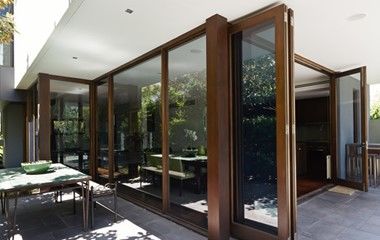All Categories
Featured
Table of Contents
Climateframe Double Glazing: Perth's Double Glazed ... in Greenwood Western Australia
Laminated glass is typically used in areas in the home most prone to injury from human effect such as restrooms, doors, around staircases and in areas close to the floor (it meets the requirements of 'security glass' that is mandated for usage in these areas by Australian Standard AS 1288 Glass in buildings).
Toughened glass has actually been 'tempered' by being reheated and rapidly cooled once again. This process makes it much stronger than standard glass it can resist greater impact loads before breaking. It also makes it safer due to the fact that, when it does shatter, it burglarizes numerous small cubic pieces instead of harmful shards.
Why Should You Have Double-glazed Windows This Summer? in Orelia Western Australia
However, toughened glass has no thermal or acoustic advantages over other glass of the very same toning or density. Secondary glazing is where single-glazed windows are retrofitted with a transparent acrylic or glass sheet connected to the within the frame or openable sash with a secondary frame or with magnetic strips.


Secondary glazing will not carry out as well thermally as a manufactured IGU, given that it is impossible to absolutely seal the boundary, but it can provide excellent noise control. Window films are a thin polymer movie containing a taking in dye or reflective metal layer, with an adhesive backing. They adhere to your glazing to alter its colour or make it reflective.
Why Do You Need Double Glazing Windows In Summer? in Wattle Grove WA
Applied to existing glass, some window films can halve the overall SHGC of the window by taking in and/or reflecting solar radiation. This can be particularly helpful in hotter environments where cooling is the main issue, or on east and west elevations straight exposed to extended periods of sunshine. However, window movies may also decrease visible light transmittance.

For this reason, it is normally best to use an accredited installer of window film. Frames have a substantial influence on the thermal performance of doors and windows, due to the fact that energy can be acquired and lost through the frame, along with through the glass. Different types of frame will allow various levels of heat gain and loss, so mindful option of frame is crucial for reliable passive design.
Double Glazed Windows – Their Amazing Benefits For ... in Salter Point Perth
However, aluminium is likewise a great conductor of heat and will reduce the insulating worth of a glazing unit, unless specifically crafted to reduce this. A 'thermally broken' frame is made up of 2 aluminium areas connected by a structural insulator (usually a low-conductivity structural polymer). This 'breaks' the thermal connection through the aluminium and reduces the heat streaming through the frame.
Timber frames are an excellent natural insulator that can match some house styles. Lumber frames need to be made from species that have naturally high sturdiness or be dealt with to avoid decay and contortion.
Double Glazed Windows: A Complete Guide in Alexander Heights WA
(weather removing) is set up.
u, PVC windows and doors have exceptional thermal efficiency Picture: Ben Wrigley (Light House Architecture and Science) Composite frames utilize aluminium profiles on the external areas with either a wood or u, PVC inner section. These integrate the low maintenance and toughness of aluminium with much improved thermal performance.
Table of Contents
Latest Posts
Types Of Glazing For Your Windows, Explained in Wembley Downs WA
Single Vs Double Vs Triple - Which Window Is Right For Your ... in Eden Hill WA
Why Install Stunning Double Glazing Windows During Summer? in South Guildford WA
More
Latest Posts
Types Of Glazing For Your Windows, Explained in Wembley Downs WA
Single Vs Double Vs Triple - Which Window Is Right For Your ... in Eden Hill WA
Why Install Stunning Double Glazing Windows During Summer? in South Guildford WA